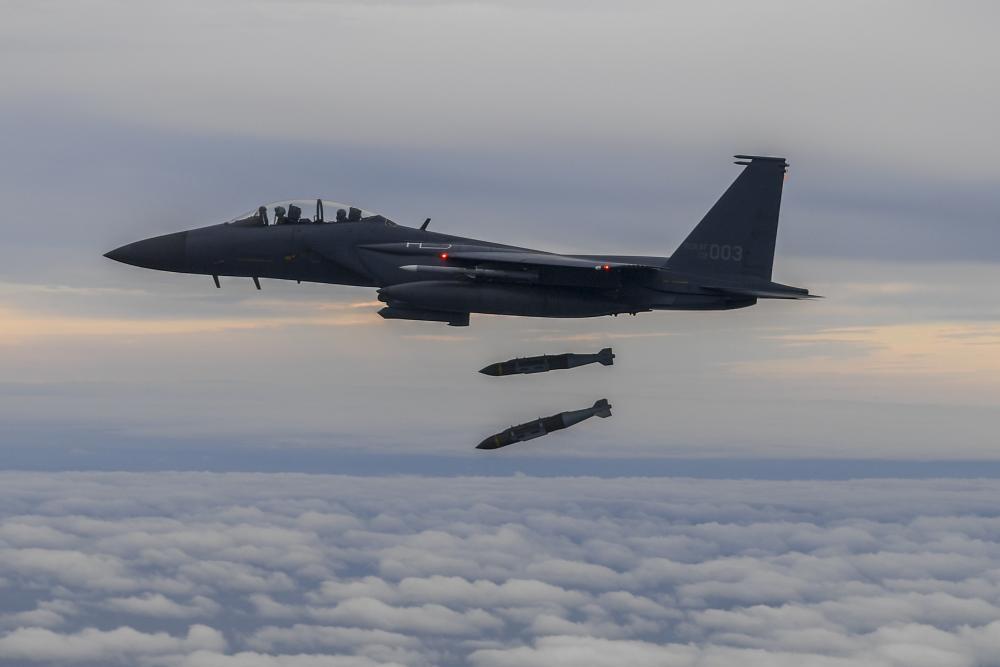South Korea flexed its military muscle in response to North Korea’s launch of an intermediate-range ballistic missile (IRBM) on Tuesday morning, firing two precision bombs at a firing range in the West Sea. Four F-15K fighters of the Republic of Korea Air Force (ROKAF) and four F-16 fighters of the U.S. Air Force participated in a joint drill on Tuesday afternoon, and the South Korean side dropped Joint Direct Attack Munition (JDAM) bombs at a target on the uninhabited island of Jikdo, about 50 kilometers off Gunsan, North Jeolla Province. The air strike drill came after the South Korean Joint Chiefs of Staff (JCS) detected an intermediate-range ballistic missile (IRBM) being launched at 7:23 a.m. from Mupyong-ri in the North’s Jagang Province.

According to the JCS, the combined flight and the precision strike drills showcased that South Korea and the U.S. are committed to responding sternly to any threats from North Korea and possess overwhelming capabilities to precisely strike the origin of provocations. The missile flew some 4,500 kilometers over Japan at a maximum height of 970 kilometers and a speed of Mach 17. Given the trajectory, the speed and the launch location, experts said the missile could be a Hwasong-12 IRBM, which the North already test-fired from Mupyong-ri on January 30. The Hwasong-12 was first revealed to the international community in a military parade on 14 April 2017 celebrating the Day of the Sun which is the birthday anniversary of North Korea’s founding President, Kim Il-sung.

The Joint Direct Attack Munition (JDAM) is a guidance kit that converts unguided bombs, or “dumb bombs”, into all-weather precision-guided munitions. JDAM-equipped bombs are guided by an integrated inertial guidance system coupled to a Global Positioning System (GPS) receiver, giving them a published range of up to 15 nautical miles (28 km). JDAM-equipped bombs range from 500 to 2,000 pounds (230 to 910 kg). The JDAM’s guidance system was jointly developed by the United States Air Force and United States Navy, hence the “joint” in JDAM. When installed on a bomb, the JDAM kit is given a GBU (Guided Bomb Unit) identifier, superseding the Mark 80 or BLU (Bomb, Live Unit) nomenclature of the bomb to which it is attached.

In 2009, Boeing announced that it will jointly develop the Joint Direct Attack Munition Extended Range (JDAM-ER) 2,000 lb (910 kg) version with South Korea. Under the teaming arrangement signed 27 February, Boeing and TAK will co-develop, test, and field a JDAM ER wing kit to convert the 2,000lb JDAM into a JDAM extended range. Upon successful completion of the development and flight-test programs, TAK will become Boeing’s primary supplier for the 2,000lb JDAM ER wing assembly. The wing kit will triple the range of JDAM to 80 km for the same accuracy, and will cost $10,000 per unit. The first prototypes are to be completed in 2010 or 2011. Boeing provided support to TAK as the Korean company further develops its aerospace capabilities
















